
It seems like everybody dreams about going viral online these days. Social media has transformed our lives, and this is especially true for musicians trying to make a name for themselves. Long gone are the days of standing on street corners to hand out flyers or sell demo tapes. Video platforms like YouTube and TikTok have created opportunities for musicians to showcase their talent to a global audience and build a loyal fanbase without even leaving the house!
But becoming a famous YouTuber does exact a toll. It's highly competitive, sometimes even requiring a bit of luck, and over time trolling can wear you down. But if you manage your expectations and stay persistent, it can also be incredibly rewarding, and transform your music career overnight.
But before you start posting random videos, it's important to understand that success requires a well-thought-out strategy and consistent approach. Most people are posting without following the necessary steps to succeed. The following YouTube music tips and insights can greatly improve the quality of your content and the amount of exposure you receive, helping you stand out in a very crowded field. And the first step is one every musician is already familiar with: you MUST have the right gear!
Get the Right Gear
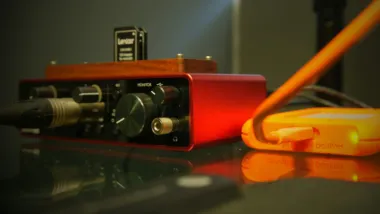
When learning how to become a famous YouTuber as a musician, having the right equipment is essential. You don’t need a professional studio to start, but investing in some key pieces can make a big difference in your video and audio quality.
Over the years, I've experimented with various setups. Starting simple with an iPhone can work, but upgrading to a decent microphone and audio interface will improve your sound quality significantly. A reliable option is the Shure SM7B microphone, which is excellent for both vocals and instruments, paired with an audio interface like the Focusrite Scarlett 2i2. This setup provides a professional sound without breaking the bank.
For recording multiple instruments, consider a condenser microphone like the Audio-Technica AT2020. It’s versatile and captures a wide range of frequencies, making it ideal for both vocals and instruments. Adding a pop filter can also help reduce unwanted noise from your vocal recordings. This setup is budget-friendly and perfect for home studios. Remember, the quality of your recording starts with the source—if your instruments and vocals sound good before hitting the mics, you’ll get a better recording.
Once you've recorded your video and audio, syncing them is a crucial step. As a Mac user, I personally love Logic Pro, which we've reviewed thoroughly here, and Final Cut Pro is useful for editing. We also have multiple articles on sample libraries, but that's getting outside the context of this article.
Create a Content Strategy
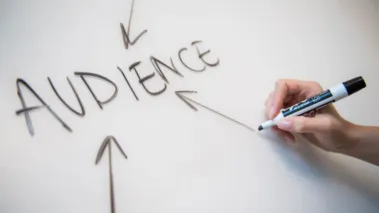
Content is king! And crafting a solid strategy for your content is crucial when trying to figure out how to become a famous YouTuber. A well-thought-out plan will help you stay organized and consistent, ensuring your channel grows steadily. One of the top YouTube music tips is to map out your content in advance. This includes planning your video themes, types, and the overall aesthetic of your channel.
Start by brainstorming different content ideas that resonate with your musical style. Whether it's tutorials, behind-the-scenes footage, or performance videos, variety can keep your audience engaged. Additionally, consider incorporating trending topics or challenges related to music. These can attract a broader audience and increase your chances of going viral.
Always remain consistent when executing your plan, and make sure to set clear goals for your channel. These could be subscriber milestones, engagement metrics, or specific projects you want to complete. Regularly review your progress and adjust your strategy as needed to keep your content fresh and relevant.
Identify Your Target Audience
Having a smaller, engaged audience that eagerly follows your content is more valuable than a large number of disengaged viewers. To achieve this, it's essential to identify and understand your ideal audience.
Create a detailed profile of your ideal subscriber. Consider their demographics, such as age and location, and delve into their interests and hobbies. What kind of music do they enjoy? What other YouTube channels do they follow?
When planning your videos, always keep this profile in mind. Tailoring your content to match the preferences of your target audience will help you attract and retain viewers who are genuinely interested in your music and content.
Determining the type of content to post can be challenging, but it's crucial for attracting and keeping the right audience. Many musicians use their YouTube channels solely to share new releases and music videos. While this is great for keeping existing fans updated, it may not be as effective in attracting new followers.
Think carefully about who your ideal audience is. If you aim to attract other musicians to sell beats or production courses, create content geared toward that niche. However, if your primary goal is to promote your original music to a broader audience, focus on content that appeals to them, such as performance videos, behind-the-scenes footage, and engaging vlogs.
Identify What People Are Searching For
Understanding what your audience is searching for is crucial for growing your YouTube channel. Utilizing YouTube and Google SEO tools, you can identify keywords that will help new viewers find your content. Focus on topics that your target audience is interested in, ensuring they align with the type of videos you enjoy making to maintain consistency over time.
Incorporate both seasonal and evergreen content into your strategy. Seasonal videos can spike your viewership during relevant times, while evergreen content will steadily attract viewers throughout the year.
Creating a successful YouTube video involves more than just filming. Designing an engaging thumbnail is vital as it’s the first thing potential viewers will see. Pair this with an intriguing title that includes your targeted keywords. Write a description rich in keywords and add relevant tags to improve searchability. Including captions can also broaden your reach by making your videos accessible to a wider audience.
Beyond content creation, familiarize yourself with YouTube’s analytics tools. These tools can help you understand which keywords and topics are driving traffic to your channel. Regularly reviewing this data can inform your content strategy and help you optimize future videos for better performance.
Another effective YouTube music tip is to stay updated on trends within your niche. Engaging with trending topics can boost your visibility and attract new viewers. Additionally, collaborating with other YouTubers can expand your reach and introduce your channel to their audience.
Determine How Frequently to Post
The frequency of your uploads is crucial, but it’s not about posting as often as possible. Quality over quantity is the key here. Choose a schedule that allows you to consistently produce high-quality videos without burning out. Many successful YouTubers find a rhythm in posting once a week, twice a week, or even once every two weeks.
To stay organized and maintain consistency, create a content calendar. Plan your next few videos in advance and aim to have them ready well before their posting dates. This approach provides a buffer, giving you time to manage unexpected events or delays without compromising your schedule. Having a few videos prepared in advance ensures you won’t miss a post even when life gets busy.
Additionally, consistency in posting helps in building a loyal audience. Your viewers will know when to expect new content, which can increase engagement and viewership. Analyzing your YouTube analytics can also help you determine the best times to post for your specific audience, maximizing reach and impact.
Focus on Quality Content
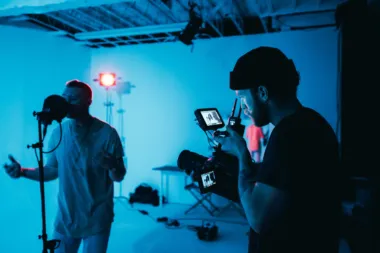
The success of a YouTube video lies in the quality of the content rather than the cost of the equipment. A single, well-placed camera angle that captures everything important is often more engaging than multiple moving cameras showing fragmented views. Similarly, a budget-friendly recording setup or a simple room microphone that clearly captures sound can be as effective as recording in a professional studio. This is especially true since most viewers consume content on mobile devices and laptops, where the subtle improvements from high-end equipment are often lost due to lower quality speakers.
It's important to understand that a high-end recording setup is beneficial, but not necessary for creating compelling YouTube content. YouTube content creation is accessible at any budget level, making it less intimidating than it might seem. With a smartphone and a decent room mic, and a bit of practice, you can produce high-quality, engaging videos. This emphasizes that success on YouTube is within reach regardless of your budget, and the key lies in focusing on creating great content.
Look Your Best
High-quality audio loses its impact if paired with poor video quality. In today's world, even smartphones can record HD footage, making it easier than ever to create visually appealing content. While there are many camera options available, one effective choice is the GoPro. These cameras provide excellent video quality and their wide-angle lens can capture an entire performance, even in small or cramped spaces. Additionally, GoPros are budget-friendly, portable, and much easier to travel with compared to bulkier DSLR cameras.
Ensuring good lighting is another crucial aspect of looking your best on camera. Natural light is ideal, but if that’s not an option, affordable ring lights or softbox lights can dramatically improve your video quality. Proper lighting eliminates shadows and highlights your features, making your videos look more professional.
Positioning is also important. Set your camera at eye level or slightly above to achieve the most flattering angle. Make sure the background is clean and uncluttered to keep the focus on you.
Moreover, consider your appearance. Dress in a way that reflects your brand and makes you feel confident. Pay attention to grooming and make sure you look presentable.
Drive Traffic to Your Channel
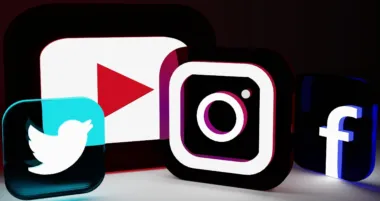
As discussed in the content strategy section, using SEO tools and targeting keywords that your audience is searching for will help you rank well in search results and bring in new viewers. However, there are additional strategies to drive even more traffic to your channel and maximize your results.
Promote your videos on other social media channels where you already have an audience, such as Facebook, Instagram, and TikTok. Sharing your content across multiple platforms increases visibility and directs your followers to your YouTube channel.
Embed your videos on your website, in blog posts, or even your link in bio site on social media. This way, people don’t have to visit YouTube to watch your videos, but their views still count towards your channel’s metrics. This is a great way to leverage your existing online presence to drive traffic to your YouTube content.
Engage with online communities related to your niche. Participate in forums, subreddits, and Facebook groups where your target audience spends their time. Share your videos when relevant, but ensure you’re adding value to the community and not just self-promoting. Building relationships within these communities can lead to more organic traffic to your channel.
Utilize email marketing to keep your subscribers informed about new content. Building an email list and sending out newsletters with links to your latest videos can drive consistent traffic from a dedicated audience.
Host giveaways or contests with entry requirements that include watching and sharing your videos. This can boost engagement and attract new viewers who may not have discovered your channel otherwise.
Optimize your video thumbnails and titles to be eye-catching and intriguing. A compelling thumbnail paired with a clickable title can significantly increase your click-through rate (CTR), drawing more viewers to your content.
Engage Your Audience
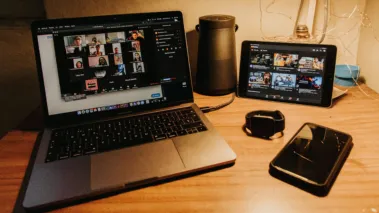
Your viewers are looking to connect with you, not just watch your videos. Be an active participant in your own community by responding to comments, initiating discussions, and asking for feedback and suggestions for future content. Show appreciation for your audience's support by giving shoutouts and hosting giveaways.
Engage with potential viewers by leaving thoughtful comments on other channels. Avoid spamming; instead, contribute meaningfully to relevant discussions. Genuine interactions can draw attention to your channel and encourage people to explore your content.
You can also use other social media platforms to extend engagement beyond YouTube. People who find success on YouTube often try out TikTok as well, and vice versa. Multi-platform engagement on non-video platforms like Instagram, Twitter, and Facebook, can strengthen your relationship with your audience and attract new viewers to your YouTube channel.
Try Live Streaming

Live streaming is an excellent way to engage with your audience and build a stronger connection with them. It allows you to interact with your subscribers in real time, offering a unique experience that pre-recorded videos can't match.
Consider live streaming performances, Q&A sessions, new release listening parties, studio sessions, or any other content that showcases your authentic, unedited self. Your audience will appreciate the opportunity to see something raw and genuine, enhancing their connection with you and your music.
Try Posting YouTube Shorts
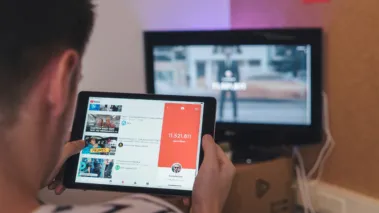
YouTube Shorts are a new but rapidly growing feature on the platform, similar to TikToks and Instagram Reels. These short-form videos provide quick, engaging snippets of content for your audience to enjoy.
One of the biggest advantages of YouTube Shorts is their ease of creation. Even when you don't have the time to produce a full-length video, you can quickly make a short clip to keep your viewers updated and engaged. This consistency helps maintain audience interest and keeps your channel active.
Additionally, YouTube Shorts are an excellent tool for expanding your reach. Like TikToks and Reels, they are shown to users who may not already follow you. By regularly posting Shorts, you can attract new viewers and potential subscribers who discover your content through this feature.
Incorporate various types of content in your Shorts, such as behind-the-scenes footage, quick tips, teasers for upcoming projects, or brief performances. This variety can captivate different segments of your audience and showcase your versatility as a musician.
Use YouTube Channel Analytics

When it comes to growing on YouTube, data is your best friend. Head to YouTube Studio to access your channel analytics and get a detailed look at how you’re doing. Here are some of the most important metrics to track:
- Click-through rate (CTR): Of all the people who saw your thumbnail and title (e.g., in search results or the related videos section), how many of them clicked to watch it?
- Watch time: The total amount of time viewers have spent watching your videos.
- Average view duration: How long viewers are watching your videos on average.
- Audience retention: How well your video keeps viewers watching through different parts.
- Percentage watched: The percentage of each video that people watch.
- Returning viewers: The number of people who come back to watch your videos again.
- Unique viewers: The estimated number of different people who watch your content over a given period.
- Traffic source types: Where your viewers are coming from, such as search results, suggested videos, external links, or social media.
- Impressions: The number of times your thumbnails were shown to viewers.
- Impressions click-through rate: How often viewers watched a video after seeing its thumbnail.
- Engagement metrics: Likes, comments, shares, and how these interact with your content.
- Subscriber growth: The rate at which you are gaining or losing subscribers.
- Demographics: Information about your audience’s age, gender, and geographical location.
- Devices: The types of devices your viewers are using to watch your videos.
- Real-time views: Current views on your videos, helping you gauge immediate performance.
Track these and other analytics to ensure you always know how your videos are performing, what you’re doing well, and where you can improve. This comprehensive analysis will provide valuable YouTube music tips and tricks to refine your strategy and achieve success in becoming a famous YouTuber.
Manage Criticism and Negative Feedback
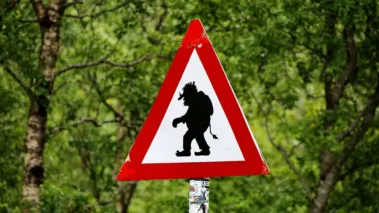
Handling criticism and negative feedback is an inevitable part of your journey on how to become a famous YouTuber. While supportive comments can boost your morale, dealing with trolls and negative remarks requires a strategic approach. Here are some valuable YouTube music tips and tricks to help you manage negativity effectively:
- Develop a Thick Skin: Understand that not all criticism is personal. Separate constructive criticism, which can help you improve, from baseless negativity. Focus on comments that offer valuable feedback and ignore the rest.
- Use Moderation Tools: YouTube provides several moderation tools to manage comments. Use filters to block certain keywords or phrases commonly used by trolls. You can also review comments before they are posted publicly.
- Engage Constructively: Responding politely to constructive criticism shows maturity and can turn a negative interaction into a positive one. Acknowledge the feedback and thank the viewer for their input, demonstrating that you value their opinion.
- Don't Feed the Trolls: Trolls thrive on getting a reaction. The best way to deal with them is to not engage. Ignore inflammatory comments and avoid getting into arguments. Instead, focus your energy on positive interactions.
- Create a Supportive Community: Foster a positive community culture by encouraging respectful interactions among your viewers. Set clear guidelines for comments and behavior on your channel. Regularly remind your audience of these standards to maintain a supportive environment.
- Take Breaks When Needed: If the negativity becomes overwhelming, it’s okay to step back and take a break. Prioritize your mental health and well-being. Engage in activities that help you relax and recharge away from the online world.
- Seek Professional Help: If dealing with negative feedback and trolling affects your mental health significantly, don’t hesitate to seek professional help. Talking to a counselor or therapist can provide you with strategies to cope with online negativity.
- Use Positive Reinforcement: Highlight positive comments and engage with supportive viewers. Show appreciation for your loyal audience by responding to their comments and featuring their feedback in your videos. This not only builds a positive community but also drowns out negative voices.
- Learn from the Feedback: Even negative feedback can sometimes offer insights into areas for improvement. Analyze the constructive elements and use them to refine your content. This approach turns criticism into a tool for growth.
By implementing these YouTube music tips and tricks, you can manage criticism and negative feedback more effectively, helping you maintain a positive mindset on your journey to becoming a famous YouTuber. Remember, the goal is to create a supportive and engaging community where you and your audience can thrive.
In summary, I'd like to say to be patient, because the journey to becoming a famous YouTuber doesn't happen overnight... Except that's often how it does happen, and sort of the point. However, it's not likely to happen overnight, immediately!
Did you know that, according to YouTube statistics, channels that post consistently grow 40% faster than those that don’t? By staying dedicated, engaging with your audience, and continually refining your strategy, you can leverage the power of YouTube to reach new heights in your music career. Remember, every successful YouTuber started somewhere—your dedication and creativity are your most valuable assets. Keep creating, stay persistent, and watch as your channel grows and thrives.

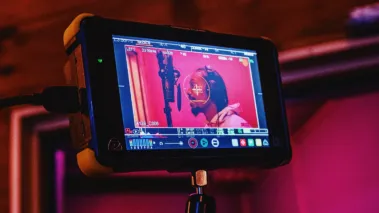
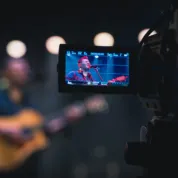
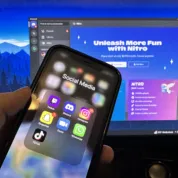


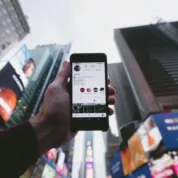
Leave a Reply!